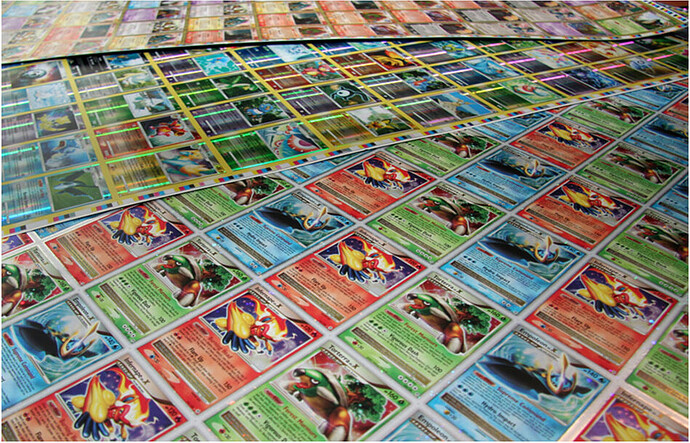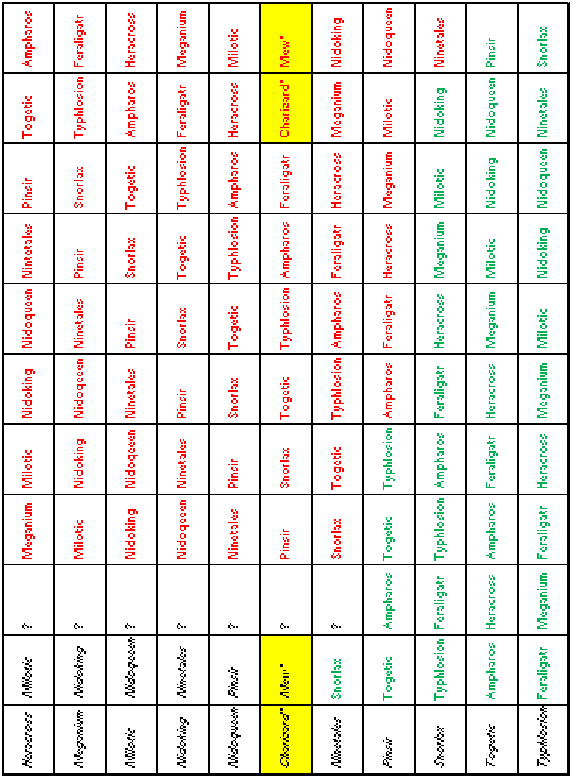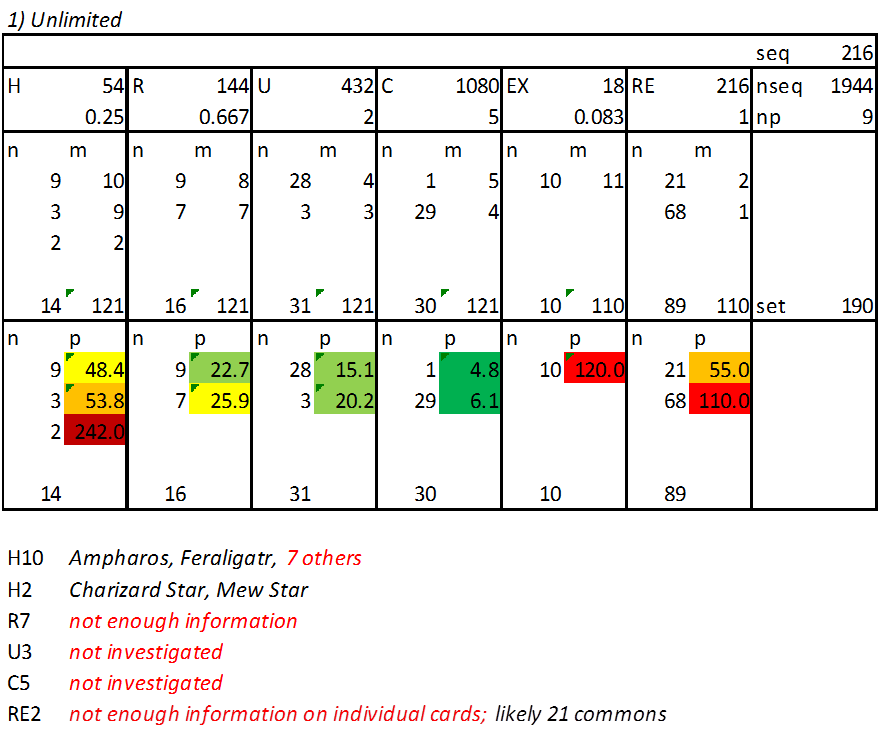Ex Dragon Frontiers
For this set, there is actually an image of the uncut holo sheet on Uncut Sheets. I initially thought it wouldn’t yield any valuable information since only a small part of the sheet is visible. I was wrong. It provides extremely interesting insights into how holo sheets were designed by Nintendo/TPCI at the time.
Let’s first go over what is independently known about sheets and card rarities in this set:
My small Youtube sample of only six boxes yielded 5 containing 9 holos and 3 Pokémon-ex, and 1 containing 8 holos, 3 Pokémon-ex and 1 Gold Star. This is much more consistent than Ex Crystal Guardians, possibly because with all the holos, Pokémon-ex and Gold Stars being Delta Species Pokémon, only 2 sheets are required to print them. Due to the image of the miscut German Charizard Gold Star which I posted in my analysis of Ex Delta Species, the Gold Stars are known to have been printed on the same sheet as the holos. The card below Charizard looks like a Lightning type, which can only be Feraligatr δ. Interestingly, I found an image of a miscut German Mew Gold Star which was printed above a Charizard Gold Star.
For the reverses, I performed the usual analysis to check if a 10x11 or an 11x11 sheet was used. Just like with Ex Crystal Guardians, it’s not absolutely conclusive but it very much looks like a 10x11 sheet was used, with 21 commons appearing on the sheet twice:
But we are close to the point where the switch to a 11x11 (121 card) sheet occurs: I have looked at the reverses for the next two sets, and it appears that for Ex Power Keepers, all 91 reverses were printed once and all six holofoil Energy Cards five times on a 121 card sheet, and for Diamond & Pearl, all 119 reverses were printed on the same sheet, 2 of them appearing twice.
Now to the holo sheet (shown above). The last few cards on the right are visible for the top 10 (of 11) rows. It appears the same sequence of cards is being repeated on each row, and that the sequence follows the set numbering (which is alphabetical). Between the first and the second row, it is shifted two cards to the right; between the following 6 rows it is shifted one card to the right. Then, between rows 8 and 9 it is shifted two cards to the left, then two to the right, and the final row is not visible.
The fact that for most of the rows the sequence is shifted to the right by one card is very revealing: Since the set contains 12 holos, it looks very much line an 11x11 sheet (11 columns) was used! Since the reverses appear to still be using a 10x11 sheet, this disproves my working hypothesis that all the holofoil sheets switched from 10x11 to 11x11 at the same time. But it would not be the first time things aren’t quite as simple as Occam’s Razor would suggest - the unusual 10x11 non-holofoil sheet apparently used to print the commons for Neo Destiny being the best example.
With that, rows 3 to 8 can be assumed to contain the 12 holos printed in set order. As to rows 1, 2, 10 and 11, if the sheet is to begin with Ampharos δ and end with Typhlosion δ, there are a total of 4 free spaces, which can be assumed to contain the Gold Stars, both of which would have H2 rarity. I place the Charizard Gold Star in row 2 above Feraligatr δ due to the miscut (incidentally, this happens to be the middle column of the sheet), and the Mew Gold Star in row 1 right above it. The position of the Gold Stars in rows 10 and 11 is hypothetically in the same column. Finally, in row 9 three cards have likely been left out of the sequence. They are the three H9 cards; it is not known which ones they are, though Ampharos and Feraligatr must both have H10 rarity. The holo sheet would then look as follows (green - known; red - inferred; black cursive - hypothetical):
Since the reverse and holo sheets have different sizes, there is no way to tell what size the Pokémon-ex sheet had. I am hypothetically gowing with 10x11, but that is no more than a guess.
What conclusions can be drawn?
- The transition from 10x11 to 11x11 card sheets happened at least one set apart for holos and reverses. I will assume that the various holofoil sheets used for Ex Crystal Guardians and earlier were all 10x11, but this is not certain. Similarly, starting with Ex Power Keepers I will assume all sheets to be 11x11 unless I find evidence to the contrary.
- The holo sheet is notable in that it prints the card in set order and has no permutations of the sequence - unlike Team Rocket, the last known holo sheet.
The rarity table looks as follows:
The raw data for the holos and rares is shown below (dashed lines indicating where the transition from H10 to H9 etc. would occur); the Pokémon-ex are assumed to all have the same rarity in my model:
I did not look at the commons or uncommons.





